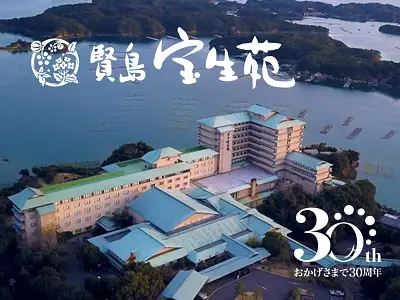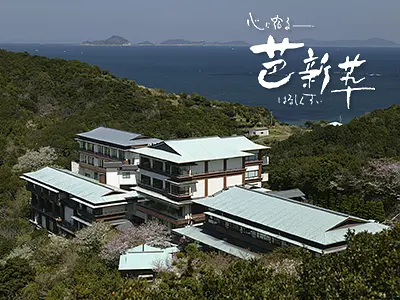二千年の歴史、伊勢神宮。受け継がれてきた伝統に見る本当のサステナビリティとは
2000年の歴史を有し、「お伊勢さん」と呼ばれ親しまれる日本人の心のふるさと、伊勢神宮。伊勢神宮には、20年に一度、社殿などを新調する式年遷宮をはじめ、年間1500回のお祭りが行われ、その文化は太古から現在へと受け継がれています。式年遷宮やさまざまなお祭りが今日まで続けられてきた歴史を紐解いて、伝統となっていった所以にせまります。

式年遷宮とは

式年遷宮とは、20年に一度、伊勢神宮の社殿や調度品、装束などをすべて新調し、大御神に新殿にお遷りいただく神宮最大のお祭りです。
伊勢神宮は、伊勢の地に鎮座して二千年の歴史を有しますが、この式年遷宮を繰り返してきたことによって、神宮は「常若」すなわち、時を経ても美しく常に若々しい姿を維持してきました。

式年遷宮が行われるようになったのは、今からおよそ1300年前。
第40代天武天皇が発意し、続く持統天皇の代に第1回式年遷宮が行われ、以後室町時代に応仁の乱のためやむなく中断をしたものの、現在まで1300年間継承され続け、平成25年には第62回目の式年遷宮が行われました。
次の式年遷宮は令和15年に予定されており、令和7年からいよいよ、遷宮に関わる様々な行事が始まります。
建築様式からわかる歴史

式年遷宮で新しくされるのは内宮・外宮の両正宮のみならず、14の別宮や鳥居などをはじめとする170を超える建物にまでわたります。
神宮の社殿は、弥生時代の穀倉に起源をもつ「唯一神明造(ゆいいつしんめいづくり)」という建築様式。
その特徴のひとつが、地面に穴を掘りそこへ柱を立てる、掘立柱(ほったてばしら)です。
神道では、神様をひとはしら、ふたはしらと「柱」で数えるように、柱を立てることは神様をお祀りすることに繋がる重要なものと考えられています。
丈夫で地震にも強く、古代の趣が残る建築方法ですが、式年遷宮は、この日本の成り立ちの時代から残る建築方法までをも受け継いでいるのです。
また、建て替え後の古材も廃棄するのではなく、両正宮の棟持柱だったものが20年後には内宮の宇治橋の鳥居となり、その20年後には三重県桑名市の「七里の渡跡」や亀山市「関の追分」の鳥居に利用されるなど、段階を踏みながら再利用されています。
神宮の森のこれから
社殿が檜の素木造りであることも、唯一神明造の特徴のひとつ。
内宮のほとりを流れる五十鈴川の上流には、「宮域林(きゅういきりん)」とよばれる神宮の森があり、第一回式年遷宮の頃には、この宮域林の檜が社殿の御造営用材として使用されていました。

社殿に使用される檜を伐り出す山は「御杣山(みそまやま)」と呼ばれ天皇陛下に定められます。江戸時代からは木曽地方の檜を使用していますが、昔と同じように再び御用材を宮域林からまかなえるよう、神宮では檜の人工林を管理・育成していく神宮森林経営計画を進めています。
計画は大正時代に始まり、2023年でちょうど100年を迎えましたが、目標とする檜が育つまでにはさらに100年というまた長い年月を要するといいます。
また、この植林の計画の目的は社殿の御造営用材を作り出すことに限りません。
大正時代、伊勢は大雨により河川が氾濫したり、山が崩壊するような水害に見舞われた歴史がありました。
そのため宮域林には檜のみでなく、広葉樹などその他の木も残しながら、多様性のある強い山づくりを目指しています。
宮域林を豊かにすることは、景観を保ち、川や水を守り、結果的に人々を守る意味も含んでいるのです。
神領民の誇り 御木曳行事(おきひきぎょうじ)
写真提供:神宮司庁
神宮の御造営用材である檜が伊勢に到着すると、御木曳行事によって神域へと運ばれます。
御木曳行事は、式年遷宮に関連する行事の中でも市民が参加できる数少ない機会であり、20年に一度、伊勢のまちが最も盛り上がる民俗行事です。
かつて神宮の領地内で生活する住民で、現在は伊勢市内に住む人々のことを「神領民(しんりょうみん)」と呼びます。その昔、御木曳とは神領民が神宮の御造営用材を運ぶ奉仕作業という位置づけでした。
そうして元は務めであった御木曳が、今では神領民として誇りのある盛大な伝統行事となっているのです。
式年遷宮が20年に一度の理由

そもそも、式年遷宮が行われるのはどうして20年に一度なのでしょうか。
これには、宮大工の技術を伝承する上で適当な期間が20年と考えられることや、古代、遷宮を行う費用に充てられた稲の貯蔵年限が20年と定められた法令による説など、さまざまな理由が推定されていますが、そのひとつとしてあるのが「朔旦冬至(さくたんとうじ)」です。
朔旦冬至とは19年と7か月に一度、冬至と新月が重なり、暦の上で重要な節目となる日のことで、これを機に原点に帰り、はじまりを意識する意味があったのではないかと考えられています。
式年遷宮によってはじまりを意識することは、初心を思い返し、それが時代を超えて受け継がれていることを確認すること。そしてこれからの世代にもこの営みが続いていくことの大切さに気づく機会なのです。
伊勢神宮の1500ものお祭り
写真提供:神宮司庁
式年遷宮のほかにも、伊勢神宮には数多くのお祭りが古式のままに受け継がれています。
その数、年間約1500回も行われており、毎年決まった日時に行われるものは「恒例祭」といわれています。
恒例祭の中でもっとも重要とされているのが、10月に行われる「神嘗祭(かんなめさい)」です。
神話の伝えるところによれば、日本人の主食である稲は天照大御神から授けられたものとされています。
農耕を中心とした営みから秋の実りに感謝し、五穀豊穣や国の安泰、人々の平安を祈るもので、その他一年を通して行われるさまざまなお祭りを行うことも、この神嘗祭に繋がっているとされています。
日別朝夕大御饌祭(ひごとあさゆうおおみけさい)

神宮のお祭りの中で、毎日朝と夕の2回行われるのが「日別朝夕大御饌祭」。
日別朝夕大御饌祭は、外宮が鎮座して以来1500年間続くもので、内宮・外宮、別宮のご祭神に朝夕の食事を奉り、「国安かれ、民安かれ」との祈りと感謝を捧げるお祭りです。
その昔、内宮は山の中で毎日のお祭りに不便であったことから、御食事を司る神である豊受大御神が迎えられ外宮が創建されました。それ以来欠かすことなく日別朝夕大御饌祭が行われています。
お供えする食事は、蒸した御飯、乾鰹、魚、海菜、野菜、果物、御塩、御水、御神酒と品目が定められ、神職により調理された神饌は御塩でお清めされたあとに御饌殿へ運ばれます。
神宮ではこれらのお供えものを自給自足するための神宮神田、神宮御園などの御料地が経営されています。

外宮では、神職がお祭りのため参道を横切る様子などを見ることができます。
4〜9月・・・朝 8時前/夕 15時過ぎ
10〜3月・・・朝 9時前/夕 14時過ぎ
※時間は前後することがあります
式年遷宮や四季折々のお祭りを繰り返し、二千年の歴史を紡いできた伊勢神宮。
その営みが今日まで継承されてきたこと、そしてそれをより良い形で後世へ伝えていくための営みが続けられていることこそ、まさに今言う“持続可能性”を示すものと言えるでしょう。

基本情報
伊勢神宮
【住所】
皇大神宮(内宮):〒516-0023 三重県伊勢市宇治館町1
豊受大神宮(外宮):〒516-0042 三重県伊勢市豊川町279
【HP】https://www.isejingu.or.jp/


